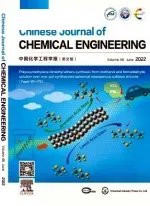Preparation and Characterization of γ-Al2O3 by Polyaluminum Chloride with High Al13 Content*
ZHAO Changwei (赵长伟)**, WANG Xiaonian (王孝年), HE Jinsong (何劲松) LUAN Zhaokun (栾兆坤) PENG Xianjia (彭先佳) and JIA Zhiping (贾智萍) State Key Laboratory of Environmental Aquatic Chemistry, Research Center for Eco-Environmental Sciences,Chinese Academy of Sciences, Beijing 00085, China The Equipment Research Institute of PLA’s Second Artillery, Beijing 00085, China
1 INTRODUCTION
γ-Al2O3is widely used as adsorbents and catalyst components in many chemical processes including cracking and hydrocracking of petroleum [1-4]. Among materials, inorganic aluminum compounds are main raw materials to prepare γ-Al2O3, which generally include aluminum chloride, aluminum sulfate, aluminum nitrate and sodium meta-aluminate. Different raw materials and preparation methods lead to different sample properties. Polyaluminum chloride (PAC) is an intermediate product in the processes of hydrolysis,polymerization and precipitation of aluminum species[5, 6]. Among Al species in PAC solution, active species Al13with a charge of +7 and a size of 1.06 nm is widely used in industries for its nano-sized and positively charged characteristic [7-11]. However, the Al13content are different for diverse sources and there are few reports on using PAC including Al13species as material for preparation of γ-Al2O3[1, 11, 12]. Moreover,there is no report on Al13phase transfer during preparation of Al2O3. In this paper, a PAC with high Al13content as a raw material is used to study its flexibility for preparation of γ-Al2O3. The results would provide a feasible material and method to prepare γ-Al2O3.
2 EXPERIMENTAL
2.1 Preparation of PAC with high Al13 content
AlCl3and NaOH (analytical grade, Beijing Chemical Company, China) were used for preparation of PAC. 0.2 mol·L-1PAC was prepared by chemical synthesis: a certain amount of 1 mol·L-1AlCl3solution was added into a 1000-ml glass reactor equipped with a Teflon anchor stirrer and a reflux condenser.The solution was kept at 65 °C using a thermostatic apparatus. A certain amount of 0.6 mol·L-1NaOH solution were pumped into the reactor through peristaltic pump under rapid stirring until the hydrolysis ratio reached a prearranged value. After the addition of NaOH solution, the reactants were continuously stirred and heated at a predetermined temperature.
2.2 Preparation of γ-Al2O3
NH3·H2O and polyethyleneglycol (PEG 400 (analytical grade, Beijing Chemical Company, China), and a new raw polyaluminum chloride (PAC) solution with high Al13content obtained in our laboratory were used as raw material for preparation of γ-Al2O3. A 0.5 mol·L-1NH3·H2O solution was introduced at a rate of 50 ml·min-1into the stirred 0.2 mol·L-1PAC at a bath temperature of 65 °C. To avoid agglomeration of the ultra-fine aluminum hydroxide, a polyethyleneglycol (PEG) 400 was used as a dispersant. With mechanical stirring, the precipitate produced was aged for 5 h, filtered, washed with water, dried in a vacuum desiccator, and then calcined at different temperatures for 6 h respectively.
2.3 Analytical methods
The Al species were measured by Ferron assay with a timed colorimetric reaction with Ferron reagent to provide speciation based on chemical reactivity on UV-Vis spectrophotometer (DR/4000U, HACH, USA).Based on the kinetic difference of the reactions between the Al species and Ferron reagent, the hydrolyzed Al species were divided into monomeric species (Ala)(reaction with Ferron from 0 to 1 min), planar oligomeric and medium polymeric species (Alb) (reaction with Ferron from 1 to 120 min), and three dimensional species or sol-gels (Alc) (reaction with Ferron after 120 min and non-reacting with Ferron). The AlTdenotes the total Al concentration and was also measured based on titrimetric method. The detailed description was described in Refs. [13-15]. The Al species distribution was also measured by27Al solution nuclear magnetic resonance (NMR) spectroscopy. Liquid state27Al NMR spectra were performed on a Varian-Inova 500 MHz NMR spectrometer, operating at a magnetic field of 11.74 T. The corresponding27Al Larmor frequency is 130.153 MHz. The spectra were acquired at sample spinning rates of 20 kHz. A glass tube of 5.0 mm was used for the experiments. Each spectrum was acquired using a total of 1000 scans with a pulse width of 0.9 μs and a recycle delay time of 2 s. Solid state27Al NMR spectra was performed on a Varian-Inova 300 MHz NMR spectrometer, operating at a magnetic field of 7.04 T. The corresponding27Al Larmor frequency is 78.155 MHz. The spectra were acquired at sample spinning rates of 5 kHz. A commercial probe with a 6.0 mm ZrO2spinner system was used for the 5 kHz experiments. Each spectrum was acquired using a total of 2000 scans with a pulse width of 0.3 μs and a recycle delay time of 1 s. The approximate spectrometer dead time including the probe ring-down was only a couple of μs. All of the spinning sidebands were acquired without difficulty including the center band phased after the single excitation pulse.
Elements composition was ascertained by energy dispersive X-ray spectroscopy (EDX) (EDAX, USA).The crystalline phases of the samples were characterized by X-ray diffraction (XRD) (Rigaku D/MAX2500)technique with Cu Kαradiation of wavelengthλ=0.15054 nm. The microscopic features of the calcined alumina samples were characterized by a transmission electron microscope (TEM) (JEM 2010, JEOL, USA)operated at 200 kV.
3 RESULTS AND DISCUSSION
3.1 Al species distribution
The 0.2 mol·L-1PAC with high Al13content of 81.2% was prepared by chemical synthesis. The content of Al species in the solutions is shown in Table 1.

Table 1 Al concentration and species distribution prepared in our laboratory
As shown in Table 1, the PAC containing as high as possible percentage of Albto get high Al13content can be synthesized. Fig. 1 shows the27Al NMR spectrum signals of PAC solution sample with high Al13content. The peak at 63.0 can be attributed to the central tetrahedral Al atom of the Keggin[AlO4Al12(OH)24(H2O)12]7+ion Al13[8, 10, 14]. Firstly,the 80 resonance represented sodium aluminate as analysis sample was set as 1.0. Integrating 0 peak area,standard curve was obtained regarding the peak area as abscissa and Al concentration as the vertical axis.The aluminum content was calculated according to the standard curve equation of integral area based on the 63 peak area by integration. The concentration of Al13was obtained by multiplying with 13 based on the above aluminum content.
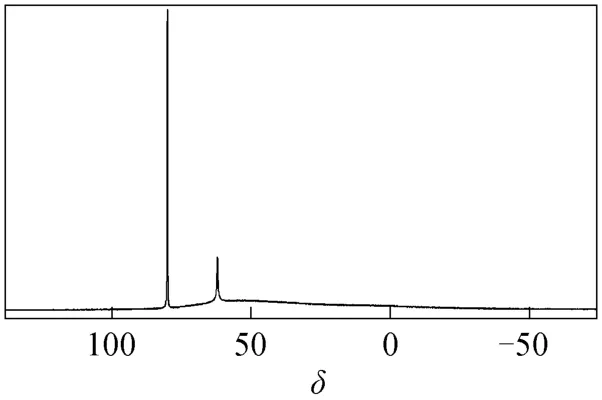
Figure 1 27Al NMR spectrum of a polyaluminum chloride solution
3.2 Effect of alkaline solution on γ-Al2O3 sample
In experiment, ammonia and sodium hydroxide alkaline were chosen as the raw materials and added to PAC solution. The effects of different alkali solution on the final product were investigated. Table 2 shows the EDX analytical results of sample after 600 °C calcinations with ammonia and sodium hydroxide, respectively. From Table 2 it is found that the samples almost only include aluminum oxide and Cl content is very rare in both products. When sodium hydroxide was used as raw material, there existed very little Na content. The result indicated that alkaline solution such as NH3·H2O and NaOH has little effect on preparation of pure alumina sample and impurities of NH4Cl and NaCl in solution can be removed through repeated washing. That is to say both NH3·H2O and NaOH solutions are feasible alkaline solution to prepare pure alumina sample.

Table 2 EDX results of alumina samples under 600 °C calcination temperature with different alkaline solutions
3.3 Effect of calcination temperature on alumina sample phase
To further characterize alumina crystal morphology, the XRD patterns of alumina samples at different calcination temperatures of 600 °C, 700 °C and 800 °C are shown in Fig. 2. XRD powder pattern shows five main strong diffraction peaks of γ-Al2O3at 2θ=19.27°, 37.43°, 39.66°, 46.02° and 66.73°. The results indicate that the samples are of γ-Al2O3crystalline phase.
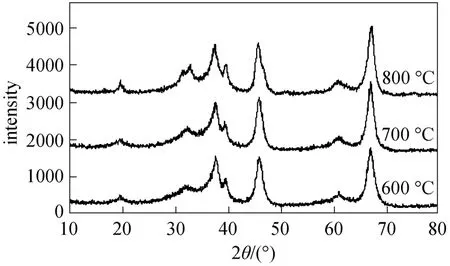
Figure 2 XRD patterns of alumina samples prepared under different calcination temperatures
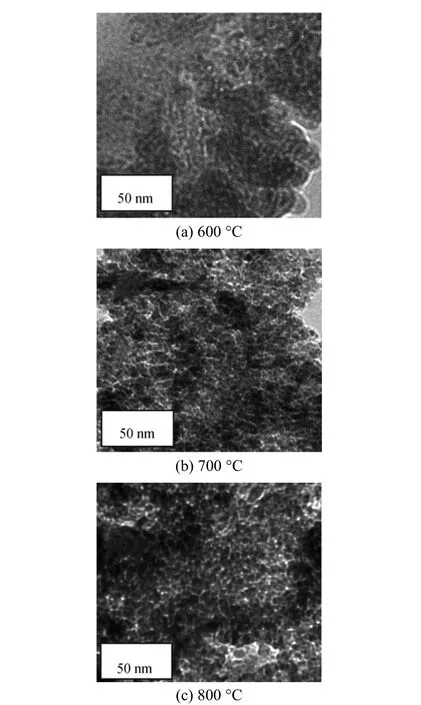
Figure 3 TEM images of alumina samples prepared under different calcination temperatures
Figure 3 illustrates the TEM microstructures of the alumina samples at different calcinations temperatures of 600 °C, 700 °C and 800 °C. It can be seen that the calcination temperature changes little the morphology of the γ-Al2O3power, and morphology is uniform nanosized particle. With increasing calcination temperature from 600 °C to 800 °C, the pore size increased from 6.4 to 8.6 nm, which agreed with previous studies on the thermal stability of mesoporous alumina. The reason may be attributed to the sintering of small pores at high temperatures as a result of the condensation reaction of the surface hydroxyls [16].
The solid state27Al NMR spectrum of γ-Al2O3sample is shown in Fig. 4. Comparing to PAC material spectra, a peak observed at around 6, which was attributed to octahedral aluminum of γ-Al2O3was detected. The chemical shift at 63 was also observed and assigned to the tetrahedral Al situated at the center of the Al13molecule. These results were in agreement with the spectrum reported in Refs. [12, 17-19]. By above analysis, it can be seen that Al13can be existed under transformation to solid γ-alumina.
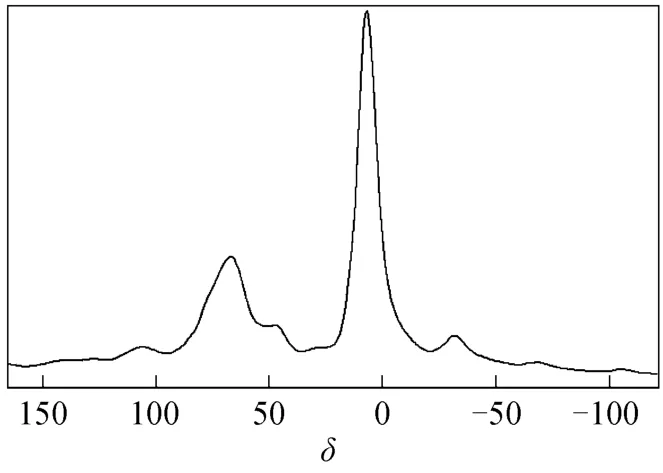
Figure 4 27Al NMR spectrum of γ-Al2O3 solid sample at calcination temperature of 600 °C
1 Zhang, Z.R., Pinnavaia, T.J., “Mesostructured γ-Al2O3with a lathlike framework morphology”,J.Am.Chem.Soc., 124, 12294-12301(2002).
2 Zheng, S.Q., Pang, X.M., Liu, H.H., Wang, B.J., Zhao, L.H., “Application of pseudoboehmite being synthesized by aluminum sulfate in the preparation of FCC catalyst”,Chem.Ind.Eng.Prog., 21,331-333 (2002).
3 Cai, W.Q., Yu, X.F., “Preparation of macro mesostructured pseudoboehmite and γ-Al2O3with high surface area”,Prog.In.Chem., 19,1322-1330 (2007).
4 Bai, P., Wu, P.P., Yan, Z.F., Zhao, X.S., “A reverse cation-anion double hydrolysis approach to the synthesis of mesoporous γ-Al2O3with a bimodal pore size distribution”,Micropor.Mesopr.Mater., 118,288-295 (2009).
5 Luan, Z.K., “Study on basic theory and application of inorganic polymer flocculate polyaluminum chloride”, Ph. D. Thesis, Research Center for Eco-Environmental Science, CAS, China (1997).
6 Qu, J.H., Liu, H.J., “Optimum conditions for Al13polymer formation in PACl preparation by electrolysis process”,Chemosphere, 55,51-56 (2004).
7 Salerno, P., Mendioroz, S., “Preparation of Al-pillared montmorillonite from concentrated dispersions”,Appl.Clay.Sci., 22, 115-123(2002).
8 Liu, H.J., Qu, J.H., Hu, C.Z., Zhang, S.J., “Characteristics of nanosized polyaluminum chloride coagulant prepared by electrolysis process”, Colloids and Surfaces A : Physicochem Eng. Aspects.,216,139-147 (2003).
9 Vicente, M.A., Belver, C., Trujillano, R., “Preparation and characterisation of vanadium catalysts supported over alumina-pillared clays”, Catal. Today., 78, 181-190 (2003).
10 Hu, C.Z., Liu, H.J., Qu, J.H., “Coagulation behavior of aluminum salts in eutrophic water: Significance of Al13species and pH control”,Environ. Sci. Technol., 40, 325-331 (2006).
11 Billik, P., Turanyi, T., Plesch, G., Horvath, B., “Mechanically activated basic polyaluminium chloride as precursor for low-temperature α-Al2O3formation”, Scri. Mater., 57, 619-621 (2007).
12 Macedo, M.I.F., Osawa, C.C., Bertran, C.A., “Sol-gel synthesis of transparent alumina gel and pure gamma alumina by urea hydrolysis of aluminum nitrate”, J. Sol-Gel Sci. Technol., 30, 135-140 (2004).
13 Wang, C.Y., Zhang, C.H., Bi, S.P., “Assay of three kinds of aluminum fractions (Ala, Alband Alc) in polynuclear aluminum solutions by Al-Ferron timed spectrophotometry and demarcation of their time limits”, Spec. Spec. Ana., 25, 252-256 (2005).
14 Chen, Z.Y., Fan, B., Peng, X.J., “Evaluation of Al30polynuclear species in polyaluminum solutions as coagulant for water treatment”,Chemosphere, 64, 912-918 (2006).
15 Guo, Y.J., Luan, Z.K., Fan, B., “Preparation of high concentration polyaluminium chloride solutions with high percentage of Al13”,Chin. J. Inorg. Chem., 1, 63-69 (2007).
16 Bai, P., Xing, W., Zhang, Z.X., Yan, Z.F., “Facile synthesis of thermally stable mesoporous crystalline alumina by using a novel cation-anion double hydrolysis method”, Mater. Lett., 59, 3128-3131(2005).
17 Kwak, J.H., Hu, J.Z., Kim, D.H., “Penta-coordinated Al3+ions as preferential nucleation sites for BaO on γ-Al2O3: An ultra-high-magnetic field27Al MAS NMR study”, J. catal., 251, 189-194 (2007).
18 Pecharroman, C., Sobrados, I., Iglesias, J.E., “Thermal evolution of transitional aluminas followed by NMR and IR spectroscopies”, J.Phys. Chem. B., 103, 6160-6170 (1999).
19 Kwak, J.H., Hu, J.Z., Lukaski, A., “Role of pentacoordinated Al3+ions in the high temperature phase transformation of γ-Al2O3”,J. Phys. Chem. C., 112, 9486-9492 (2008).

